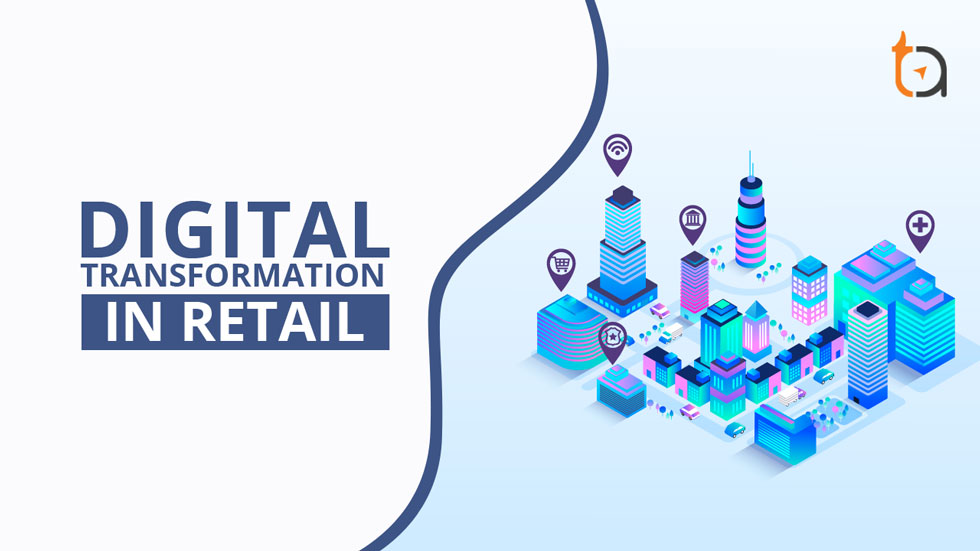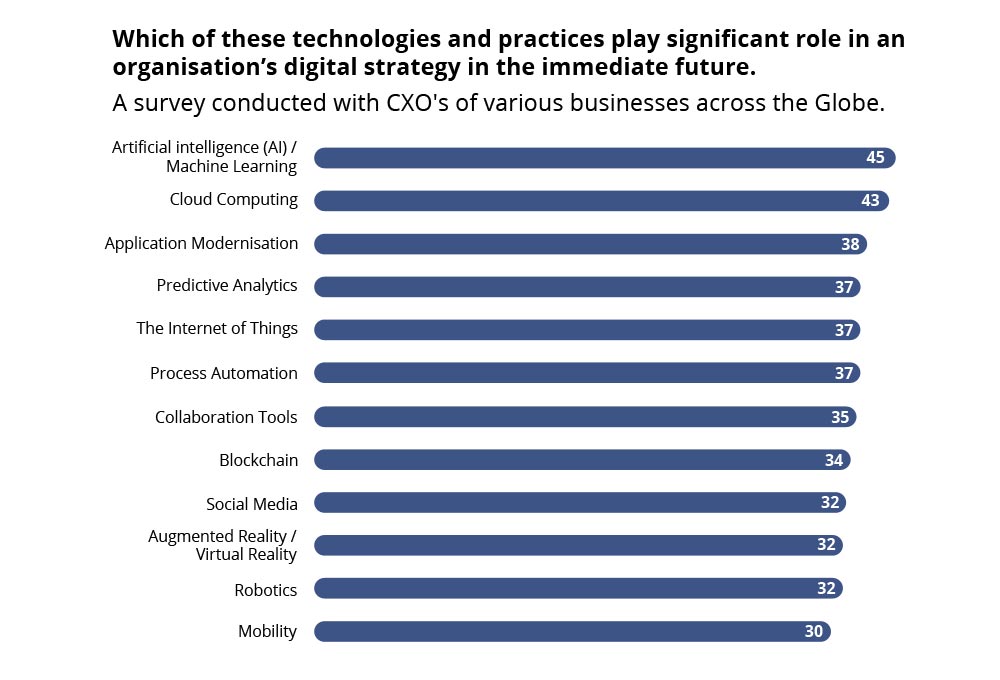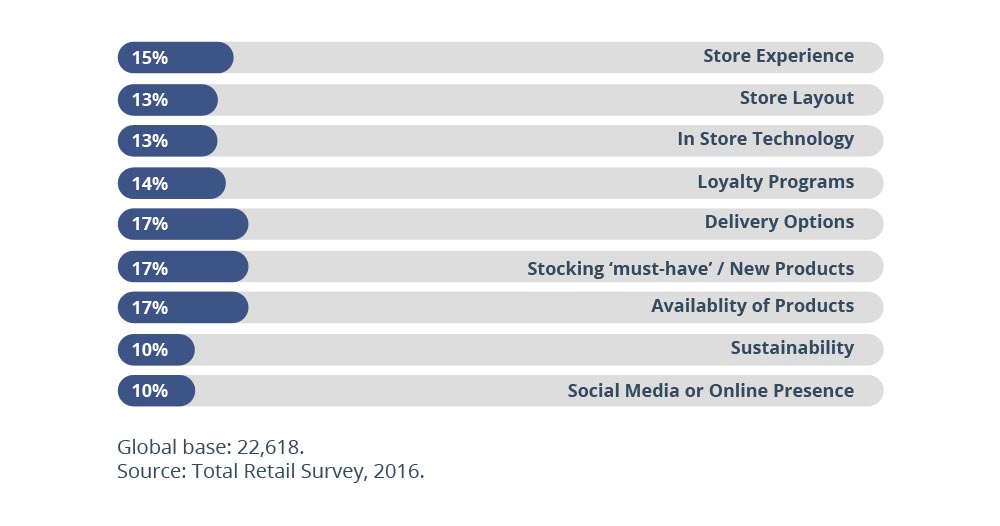Digital Transformation Strategy for Retail Businesses

Author : Arul Selvan 22nd Nov 2019
A guide for retailers to serve the modern consumer.

“Change management, training and reskilling people is absolutely critical to enable a true digital transformation.” – Thomas Kropp, Chief IT Services Officer, Zurich Insurance Group
Retail businesses are continuously exploring innovative ways to serve shopper expectations, bridging the gap between digital and physical shopping experiences. Businesses try numerous dozens of techniques to transform the retail experience from paperwork to handling back-office processes, and much more. Let’s see how digital transformation strategy in retail will streamline the process.
” 90 percent of pre-purchasing research happens online. “
Several businesses have experimented with new concept strategies and learn from how buyers are interacting with specific technologies and services before implementing them at large scales. It’s clear that the retail industry is among the industries that are most affected by digital business transformation for several reasons.

What’s the big deal with Digital Transformation?
Digital transformation is not merely about technology but certainly also not just about companies in information technology (IT) industries or the tech startup ecosystem.
Digital transformation by itself is the profound transformation of business and organizational activities, processes, expertise, and facilities structure to completely leverage the changes and opportunities with the right mix of digital technologies and their accelerating marketing impact strategically and decisively, with present and future changes.
Present and future times and changes are leading businesses to the necessity of faster adoption of a digital transformation strategy. The hype and urgency can be influenced by several elements, often the new ever-changing levels of customer behavior and expectations, new economic realities, etc.
Drivers of Digital Transformation in Retail
“Consumers want more engaging and personalized in-store experiences.“

- The evolving expectations from modern digital/omnichannel buyers who don’t notice or care about various channels and technologies as much as retail business owners.
- eCommerce businesses are in an urgent need to blur digital and physical experiences with in-store experiences as a crucial element. The boundaries are blurred between digital and physical in the mind of the consumer and further enabled by the Internet of Things and immersive experiences in virtual (VR) and augmented reality (AR).
- With higher expectations that are continuously growing. Challenges in the supply chain are really crucial and are far from digital maturity. The supply chain depends on speed, time and transparency according to the new consumers.
- Major corporates and competitors are increasing cost pressure on small upcoming businesses. Fortunately, thanks to new digital potentialities, there are many methods to minimize expenses, among others on the level of digitization and supply chain.
- The impact and opportunities in areas such as data-driven optimization and marketing, is pushing retailers to adopt new methods. Collecting, Analysing and Executing on the user behavior data are more crucial than ever before.
- Modern buyers gravitate and expect to have a personalized experience online while shopping. This is completely data-oriented and difficult to gauge as it depends on multiple variables. The answer so far is to have an accessible, user-friendly and immersive shopping experience with digital technologies accessible all over the place and used is utilized from displays to even music and ambiance.

The Ever-changing Consumer
Causes and consequences of changing consumer behavior are the key reason why retail is transforming quickly. However, as often the digital transformation needs mainly come from a changed behavior – here in people’s capacities as buyers.
Today’s consumer is not completely digital, they are still likely to prefer to shop in a physical store. Knowing that 90 percent of all retail sales transactions occur within the store, why should retailers even bother about the digital behavior of a consumer? Because the ‘modern consumer’ typically is a consumer who represents a shift in behavior, despite all the tools or channels or experiences they use and seek.

Changing Shopping and Retail Behavior of Consumers
A CHANNEL-AGNOSTIC BUYING JOURNEY
The use of digital tools and channels across each possible stage of the shopping journey has skyrocketed. Channel agnosticChannel agnosticChannel agnostic means abstracting your communication to the message you want to deliver, and the person or people you want to deliver to, and avoid thinking in terms of the channel you deliver it on. has an importance on common pre-shopping tasks (finding products or shops, comparing, reading reviews), the actual shopping transaction (in-store, via digital platforms) and post-shopping (word-of-mouth, reviews, customer service, future purchases, engagements).
Seamless and immersive CXCXCX stands for customer experience. Oftentimes it's also referred to as ICX which stands for interactive customer experience given the increasing digital retail environment.
The expectations of a seamless customer and the shopping experience across multiple touchpoints and channels, whereby the customer displays so-called omnichannel behavior and asks experiences that are easy, fast and frictionless.
Rise in Innovation as a New Expectations
The expanding requirements of consumers for innovative purchasing opportunities and experiences that extend beyond distinction but are unique and provide the need that many buyers have for innovative brand and shopping experiences beyond excellent customer experience.
Ease of Access to Information
The information and assistance expectations buyers have from store assistants. The need for information on products and stores are apparent in a digital context. However, your buyer also wants fast information in an in-store context and that has an impact on your agents and on the need to empower it with the proper tools and support.
Push towards Self-service, Self-checkout and Seeking Information and Self-support
In 2017, half of all transactions happened via mobile POS or self-checkout. The challenge is that not everyone is as keen about self-anything and in many cases, personal connection is preferred, for instance in an urgent service or when seeking information about products. Referring to the previous point on information, there is a case to not just empower your store’s staff but also to move information self-service tools to touchpoints where they create most value, enabling shoppers to inform themselves easily.
Mobility in Retail
Retail consumers use digital devices in several stages of the buying journey, even if 90% of in-store transactions happen online.
The majority of these tasks are performed using a mobile device and on the go. Moreover, when in your store, a significant percentage of shoppers get out their smartphones to perform various tasks whereby the lines between digital and physical disappear thanks to consumers’ “mobile ability“.
“90 percent of people use their smartphones in stores while they shop.”
Current State of Digital Transformation in Retail
- The global retail scene is evolving rapidly, mainly e-commerce like Amazon growing fast and traditional brick-and-mortar retailers witnessing serious drops in revenues, caused by digital disruption, defined as the speed of adoption of new technologies.
- Convenience is important but the price is still king. Clearly, both matter a lot but the role of the price is a challenge. The main aspect being discussed is “What if convenience and price could be optimized with digital transformation?”
- The in-store customer experience values even more than in the past, with consumers requiring more engaging and personalized experiences. With store traffic down, the emphasis is on conversion.
- 40% of respondents say that sales associates with deep knowledge of the product range are important for them.
- Social media and peer opinions have a key influence on buying decisions and perceptions of brand authenticity with 45% of respondents saying that reading opinions and comments influence their shopping behaviors.
- Mobile commerce is big and mobile shopping is becoming the shopping tool of choice. Mobile shopping increased 8% last year and 34% of respondents agree that their mobile phone will become their main purchase tool.
Transforming the landscape of retail business by driving digital transformation will help ease the process and enhance the customer experience (CX). Want to drive digital transformation to your retail store? Drop your queries at media@techaffinity.com or schedule a meeting for a digital transformation strategy to your retail business.
